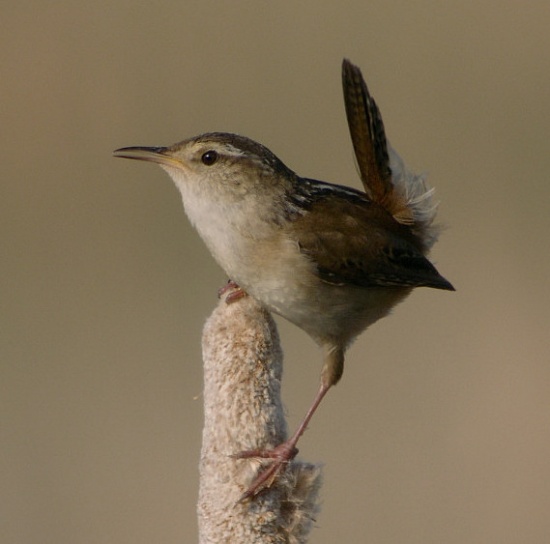| Line 1: | Line 1: | ||
;Cistothorus palustris | ;Cistothorus palustris | ||
| − | [[Image:Marsh_Wren.jpg|thumb|550px|right|Photo by Skean]] | + | [[Image:Marsh_Wren.jpg|thumb|550px|right|Photo by Skean <br/> Photographed on Plum Island, Newburyport, Massachusetts, USA in June 2005]] |
==Identification== | ==Identification== | ||
| − | + | Brown upperparts, light brown belly and flanks, white throat and breast. The back is black with white stripes. They have a dark cap with a white line over the eyes and a short thin bill. | |
| − | |||
| − | |||
| − | |||
==Distribution== | ==Distribution== | ||
| − | + | [[United States]] and [[Mexico]]. | |
==Taxonomy== | ==Taxonomy== | ||
==Habitat== | ==Habitat== | ||
| − | + | Marshes with tall vegetation. | |
==Behaviour== | ==Behaviour== | ||
| − | The nest is an oval lump attached to marsh vegetation, entered from the side | + | The nest is an oval lump attached to marsh vegetation, entered from the side. |
| − | |||
| − | |||
| − | |||
| − | |||
| − | + | Diet includes insects, also spiders and snails. | |
Revision as of 15:27, 17 October 2007
- Cistothorus palustris
Identification
Brown upperparts, light brown belly and flanks, white throat and breast. The back is black with white stripes. They have a dark cap with a white line over the eyes and a short thin bill.
Distribution
United States and Mexico.
Taxonomy
Habitat
Marshes with tall vegetation.
Behaviour
The nest is an oval lump attached to marsh vegetation, entered from the side.
Diet includes insects, also spiders and snails.




